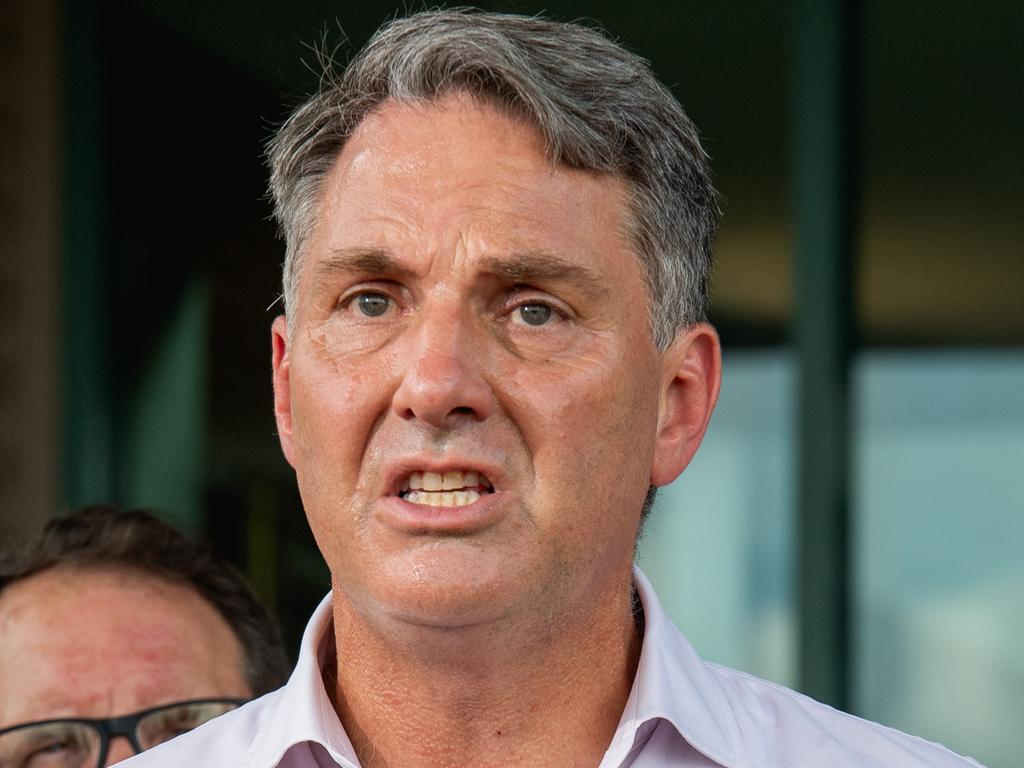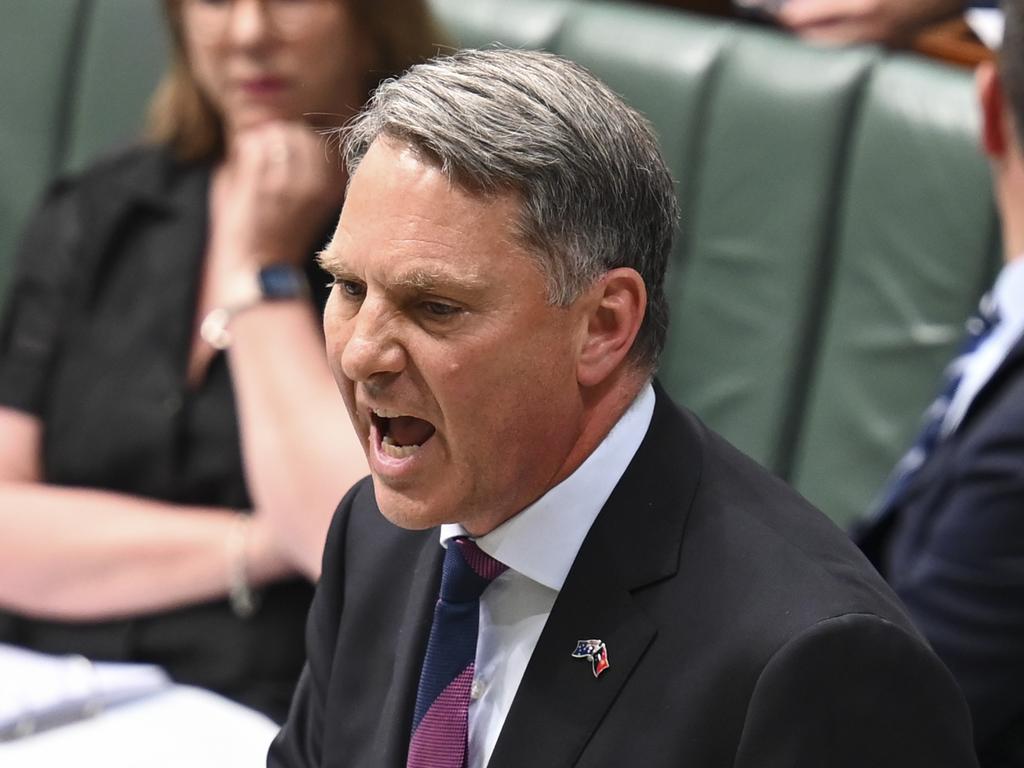Defence in Boxer war with Marles as budget fight escalates
The army’s $5.7bn Boxer armoured vehicle program has become the latest bargaining chip in Defence’s escalating war with Richard Marles.

The army’s $5.7bn Boxer armoured vehicle program has become the latest bargaining chip in Defence’s escalating war with Richard Marles, with the department warning the government’s demands for savings are threatening the long-awaited capability.
Multiple sources said the Defence Minister’s funding battle with the department could force renegotiation of the contract with Germany’s Rheinmetall for 211 Boxer vehicles, threatening jobs at the company’s Queensland plant and potential export orders.
The warnings came days after Mr Marles delivered a brutal assessment of his department’s performance, declaring it had “a long way to go” before it could claim to have a “culture of excellence”.
Mr Marles and Defence Industry Minister Pat Conroy are looking for savings to pay for nuclear submarines, ships and missiles.
Projects not aligned with last year’s Defence Strategic Review – which demanded a more lethal, agile force – are set to be scaled back, delayed or cancelled in a new 10-year capability plan.
A Defence source said if new funding was not found, plans to produce 186 of 211 Boxer vehicles in Australia “may have to be cut”.
The same source said the capability planning process was becoming increasingly chaotic, and the department was “burning out trying to keep up with the ministers’ offices”.
“The schedule of government-defence decision-making has been completely disbanded,” the Defence insider said. “All interactions have been ad hoc, with very little lead time for preparation.”

Mr Marles’s spokeswoman refused to comment.
One former senior commander said when Defence was under budget pressure, it often played a “gold watch” card with the government to stave off cuts or secure additional funding.
“They say ‘We have nothing more to give you, government, except this iconic capability’. A strong minister would say ‘Nice try. Get me another option,’ ” the source said.
DSR co-author Peter Dean said the brinkmanship over key projects was a symptom of the high-stakes reform contest under way between government and Defence.
“Whenever we get to the pointy end around resources and reform, there is always going to be tension,” Professor Dean said.
“The government’s role is to stick to the strategy it has agreed on and hold the department to account for that. The department’s role is to reform as best they can and provide the best advice to the government.
“Ultimately, we have civilian oversight over the military, so it’s the government who’s responsible for ensuring that reform happens.”
The army faces some of the deepest cuts after the DSR, which called for a force optimised for maritime warfare and the ability to strike enemies far from Australia.
Tensions between Mr Marles and his department over the pace of Defence reform exploded last week when he told parliament: “I make no excuses or apologies for demanding excellence and a culture of excellence in the Department of Defence and in the Australian Defence Force. And there is a way to go before we have that culture of excellence in the department … and ADF.”
A government source told The Australian that Mr Marles had been handed “a grenade” by Defence in a draft of its capability plan that would have been politically fatal if it had been implemented.
Former Defence official Peter Jennings said Mr Marles’s relationship with his department appeared to have broken down, entering a period of “deep negativity” that threatened the government’s capability plans.
“As far as I can see, the key problem is that he has failed to deliver expected new money for the organisation,” he said.
“Because you know, all the talk, all of the purpose behind the DSR was to equip Defence for the great strategic threat we face. And then in the government’s first budget, there was no new money for Defence, just a continuation of the forward estimates.
“And everyone believes that Males failed in the expenditure review committee and was effectively rolled by (Jim) Chalmers and (Foreign Minister Penny) Wong.”
Mr Jennings said the government was asking Defence to “do the impossible” by demanding it do more with less.
“It just can’t be done. The only way you can do it is to sort of string out a small number of deliverables over a much longer period,” he said.
“They’ve got to find room now for nuclear submarines, they’ve got to do missile construction – that was never part of the expected budget.
“Now we’re being told there’s some sort of secret drone people have mysteriously been working on that will be delivered this year. Well, that wasn’t in the budget.”
The nuclear submarine program’s drain on the wider Defence organisation was revealed in recent briefing notes obtained by Greens senator David Shoebridge, showing 688 personnel are already working on AUKUS – more than a decade before the first submarine is due to arrive. By 2024-25, the program’s funded staffing will rise to 922.
The Albanese government’s challenges in the Defence portfolio were underscored late on Friday by an Auditor-General’s report revealing the department’s top 20 procurement projects slipped a combined 101 months behind schedule in 2022-23.
The analysis does not include the Hunter-class frigate program because the government has yet to finalise a scheduled operating date for the ships, which will have cost $4.3bn by the time work gets under way on the first vessel this year.
The number of Hunters to be acquired is set to be slashed to three or six from a planned nine vessels, with the government likely to switch to more heavily armed destroyers for the remaining hulls.
A battle is also under way between Defence and German shipbuilder Lurssen over lightly armed Arafura-class offshore patrol boats, with the department trying to shift contract variation costs on to the company to lift the specifications of the first six ships as it threatens to cancel a further six.








To join the conversation, please log in. Don't have an account? Register
Join the conversation, you are commenting as Logout